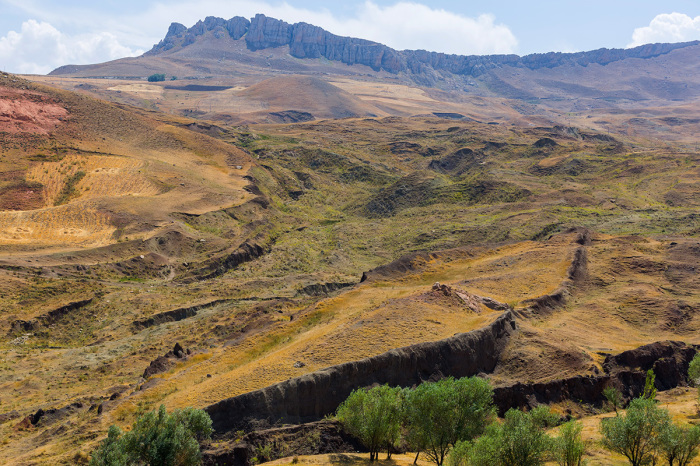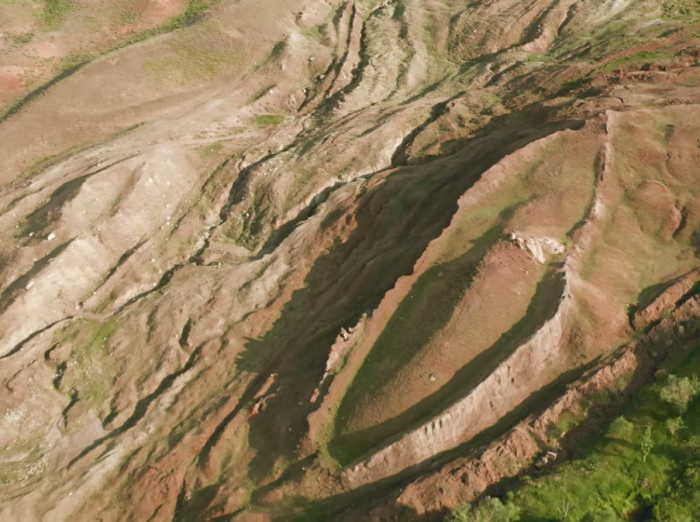3D scans show boat-like formation matching 'biblical' description of Noah’s Ark, archaelogists say

Biblical archaeologists say they have discovered a boat-like formation matching the biblical description of Noah's Ark as they used a ground-penetrating radar at a rocky spot in eastern Turkey that some speculated to be the location of the original vessel.
Archaeologists associated with a project named Noah's Ark Scans say they have discovered a "boat formation" on Mount Tendürek matching the "exact length" of the ark given in the Bible — around 150 meters or 300 cubits in biblical terms — The U.S. Sun reported Sunday.
The Durupinar boat-shaped formation was discovered in 1959 by a Turkish army captain. The research interest in the site began in the 1970s through the mid-1990s due to the work of American explorer Ron Wyatt and others. According to the project's website, independent private geophysical surveys were conducted in 2014 and 2019 "showing layers and interesting angular structures below the ground."
"The new GPR data shows parallel lines and angular structures 8 to 20 feet down," the project explains on its website. "These parallel lines and right angles below the surface are something you would not expect to see in a natural, geologic formation. Interestingly, the boat formation has also been confirmed to be the exact length of the ark given in the Bible (Genesis 6:15)."
This year, a consortium of Turkish scientists and other supporters plan to do "the most complete geophysical survey and scientific study of this site to date using as many modern scientific methods as possible."
"We have the support of key locals, we have interested scientists who have the permit to work in this area, and we have the media contacts to document the work," the website explains.

Andrew Jones, who leads the project, told The Sun that the GPR data is "not what you would expect to see if this site is just a solid block of rock or an accumulation of random debris from a mudflow."
"But these results are what you would expect to see if this is a man-made boat matching the Biblical requirements of Noah's Ark," he said.
Some geologists, however, say the mountainous lump is an unusual rock formation.
"I knew that the scientific consensus was that the Durupinar site is a geological oddity," Ryan Mauro, president of the Doubting Thomas Research Foundation, which is part of the project, told The Sun. "Before learning about these scans, it seemed like those who continued to argue in favor of the Durupinar site just couldn't accept the truth and let it go."
"It's a whole new ballgame now," he continued. "Those judgments dismissing the site were made decades ago and based on limited data compared to what we have now. As I learned more, I became convinced that the project was worth my support and that it is vital that we determine the truth about the Durupinar site."
In August, Jones and his team spent four days in the region surveying the ark site and meeting with archaeology professors who are also doing work in the area, such as Dr. Fethi Yuksel from Istanbul University.
"With 4 days on the ground, the team was able to meet daily and see the different sites associated with the Noah's ark research project and meet key archaeologists doing other work in the region. One good news out of the trip was that Dr. Yuksel announced that a permit with his name on it as one of the team members was issued that covered the area of the Noah's ark site," Jones announced in an update last month. "This would speed up the process of doing the work. Once the funding comes in we can start the on-the-ground research with the professors and their assistants from the 3 Turkish universities!"
He stated that there will be no excavation of the site until the "geophysical surveys, core drilling and geological studies are complete."
"This summer's work is a necessary step and the most important one to reach our goal," he wrote.
Jones said the goal "has always been to uncover as much evidence as possible for Noah's ark and to present it to the world."





























